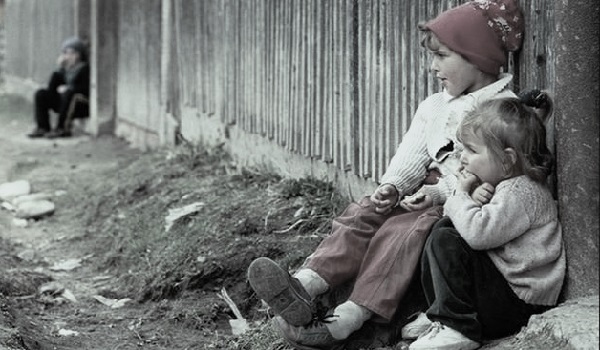 Beyond the efforts towards the convergence with the West, which are given a sub-unitary concrete form but on an increasing trend towards the 60% threshold on average, Romania has some supra-unitary social indicators (expressed in percentages of over, and more precisely, much more than 100% in terms of poverty and unfavourable social conditions conditions) on which we are going round in circles in terms of convergence.
Beyond the efforts towards the convergence with the West, which are given a sub-unitary concrete form but on an increasing trend towards the 60% threshold on average, Romania has some supra-unitary social indicators (expressed in percentages of over, and more precisely, much more than 100% in terms of poverty and unfavourable social conditions conditions) on which we are going round in circles in terms of convergence.
Here we have a major problem, unlike the much more publicized GDP per capita. Which should not be a target in itself but just a means of improving the standard of living. So that we can feel that we move closer to the European average in mass proportions, not geographically located or in relatively limited categories of population.
Eurostat has completed a synthesis report of the developments on ten co-ordinates of interest, following a harmonized methodology, which allows us to see how we have evolved over this decade in terms of real convergence at the society level.
We present the summary of the data and related conclusions.
- The ratio between the share of people at risk of poverty or social exclusion in Romania and the EU28 average remained relatively high despite the narrowing of the development gaps expressed in GDP per capita from 51% of the EU average in 2010 to 58% in 2016 and even returned in 2016 to + 65%, level registered in 2014, the year of recovering from the economic crisis.
*
- People at risk of poverty or social exclusion (%)
*
- Difficult to understand for a country going through a long-term robust growth cycle, the share of poor people from the income perspective, including social transfers, has been steadily increasing and stabilized somewhere between + 46%- 47% above the European average.
Which shows that the economy went ahead of the social sector in terms of convergence with the West.
*
- Poor people from the income perspective, including social transfers
*
- The worst situation, about to the severe material deprivation as a percentage of the total population, has improved but remained at a stupefying triple level compared to the EU average.
Moreover, the downward trend has reversed in 2016 and the quite burdensome move towards the EU average has been reversed, back to the 2012 level.
*
- Severe material deprivation (% of the total population)
*
- In the field where we were better than the European practice, namely the share of people living in low work intensity households, after a relatively good development until 2014, we found where to „harmonize” ourselves with the EU.
In 2016 the highest relative share of these people has been reached and the process will continue with the increase in social aid.
*
- People living in low work intensity households
*
- In terms of share of people living in households where costs for the house represent more than 40% of the disposable income, after the missed attempt we had in 2011 and the return to values much higher than the European average in the following year, we started a slow process of moving closer, although without any significant advance compared to the situation in 2010.
*
- People living in households where costs for the house represent more than 40% of the disposable income
*
- Regarding the reporting of situations in which difficult access to healthcare led to the failure of some health problems (where processed data stop at the 2015 level), we return to the already (unfortunately) well known 3-to-1 report related to the EU average. With the observation that here we have the most dramatic situation.
*
- Reporting of situations of unmet medical needs
*
- With regard to the share of total population representing the people who do not afford an adequate heating of their dwelling, it seems that we have entered a real convergence trajectory, but this trend was reversed later and in 2016 we went back to the relative level of 2011. That is, in the context of a robust growth, we performed the same as during the crisis.
*
- People who do not afford an adequate heating of their dwelling
*
- In terms of share of people living in improper conditions (such as broken roofs, dampness in walls or foundations, etc.) we finally find an indicator where we managed to get closer to the EU average and even obtain a significantly better performance, although national requirements in the field could be questioned compared to other member states.
*
- People living in improper conditions
*
- In terms of share of people living in households without basic sanitation facilities (bathroom, shower, toilet with running water), despite some obvious progress, Romania did not manage to reduce the relative gap.
To be noted, we are so far away from the European practice that we had to replace percentages with the number of times, as Romanians are in this situation totally incompatible with the modern civilization about 15 times more, especially than the Europeans with whom we should integrate.
*
- People living in households without basic sanitation facilities
*
- With regard to the overpopulation in terms of living conditions (where the European standard imposes certain conditions, such as a living room plus a room for each adult couple or each single adult/teenager), although we managed to get below the threshold of 50 % in 2014, we moved round in circles in terms of convergence since 2010, at a triple level compared to the European average.
*
- People living in overpopulated houses
*



















